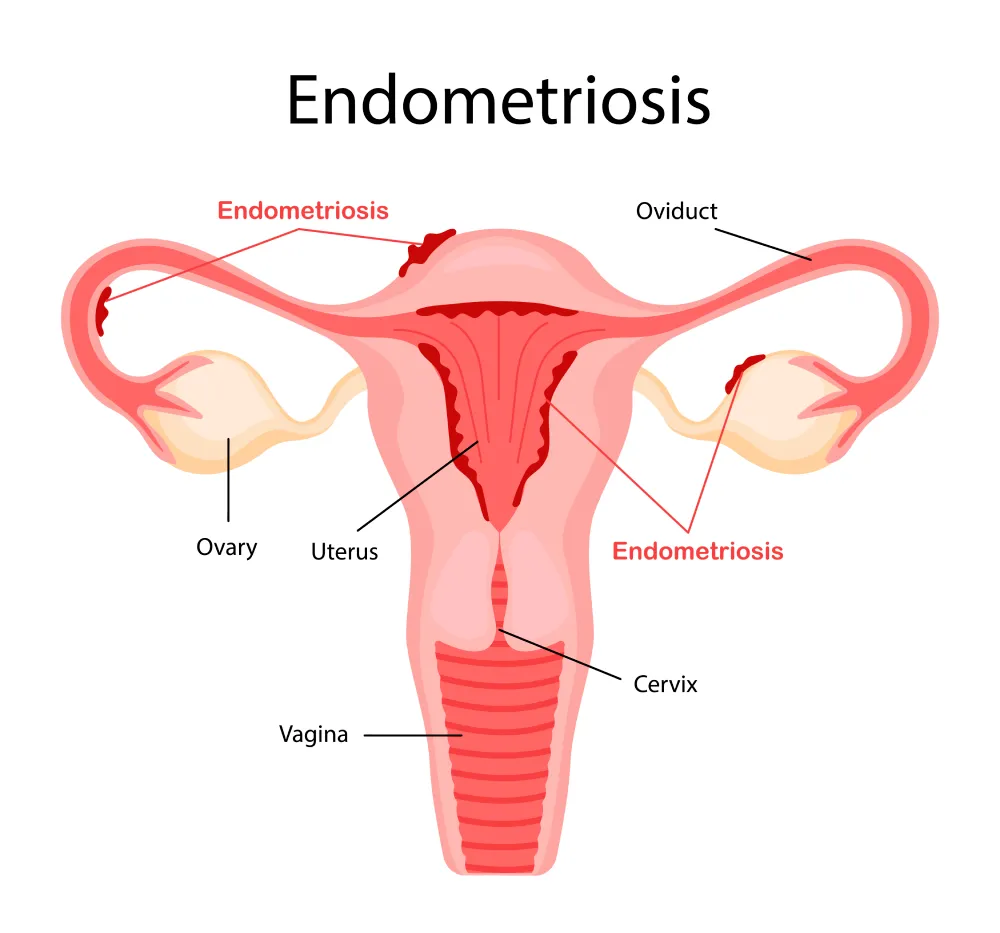- Treatments
- Laparoscopy Gynae Surgery
- Endometriosis Surgery

What is Endometriosis?
The endometrium is the tissue lining the uterus, which plays a crucial role in menstruation. Each month, if pregnancy doesn’t occur, this tissue sheds, leading to menstrual bleeding and regulating your cycle. However, in endometriosis, tissue similar to the endometrium grows outside the uterus, in areas like the ovaries, intestines, and other parts of the pelvic cavity. This abnormal tissue growth can cause pain during pregnancy. Research indicates that 1 in 10 women have endometriosis, making it a significant and painful reproductive health issue and a leading cause of infertility.
Signs and Symptoms
If you notice any of the following symptoms, it’s important to consult your gynecologist as soon as possible:
• Painful menstrual cramps
• Severe pain during or after intercourse
• Intestinal or lower abdominal pain|
• Painful bowel movements during menstruation
• Painful urination during menstruation
• Heavy menstrual bleeding
• Difficulty conceiving after a year of unprotected sex
Treatment Options for Endometriosis
- Hormone Therapy: Hormones can help manage endometriosis by inducing changes in the endometrial tissue, similar to the menstrual cycle. Hormone therapy may be taken orally, as an injection, or as a nasal spray. This treatment works by limiting ovulation and reducing the activity of endometrial tissue, which can help slow its growth and prevent new lesions, though it doesn’t eliminate existing ones.
- Conservative Surgery: For those who wish to conceive, conservative surgery that removes endometrial implants while preserving the uterus and ovaries may increase fertility chances. This option may also help alleviate severe pain, though symptoms may return over time. The surgery is often performed laparoscopically but can also be done through traditional abdominal surgery in more complex cases.
- Fertility Treatment: If endometriosis affects your ability to conceive, fertility treatments such as ovulation stimulation or in vitro fertilization (IVF) might be recommended under the guidance of a reproductive specialist.
- Hysterectomy: In cases where pregnancy is not a concern, a hysterectomy (removal of the uterus) may be considered to treat severe symptoms like heavy menstrual bleeding and painful periods. However, this procedure can have long-term health implications, especially if performed before age 35, even if the ovaries are left intact.
Laparoscopy
- Minimally Invasive: This is the most common type of surgery for endometriosis. It involves small incisions in the abdomen through which a camera (laparoscope) and surgical instruments are inserted.
- Procedure: The surgeon can remove or destroy endometrial lesions using techniques such as excision (cutting out) or ablation (burning away) with lasers, electrocautery, or other methods.
- Recovery: Generally, recovery time is quicker, and there is less scarring compared to open surgery. Patients might experience pain relief, but endometriosis can recur.
Risks and Considerations:
- Recurrence: Endometriosis can recur after surgery, especially if not all the tissue is removed or destroyed.
- Complications: As with any surgery, there are risks of infection, bleeding, and complications related to anesthesia.
- Fertility: Depending on the extent of the surgery, there might be an impact on fertility. Laparoscopy is often used to improve fertility by removing lesions, but more extensive surgery like hysterectomy will eliminate the possibility of pregnancy.
Endometriosis surgery can provide relief from symptoms, but it’s important to discuss all options, potential outcomes, and risks with a healthcare provider.